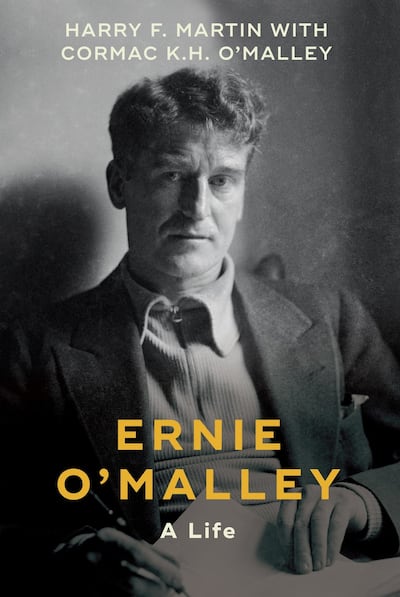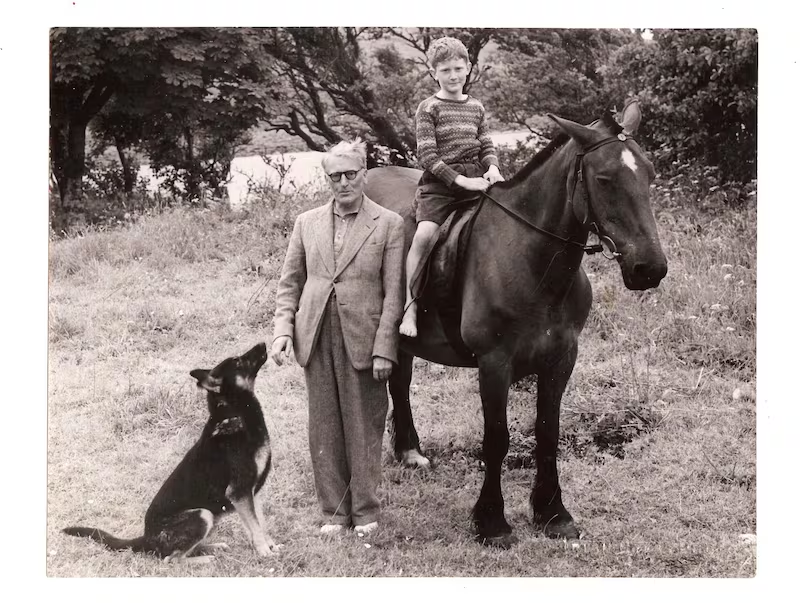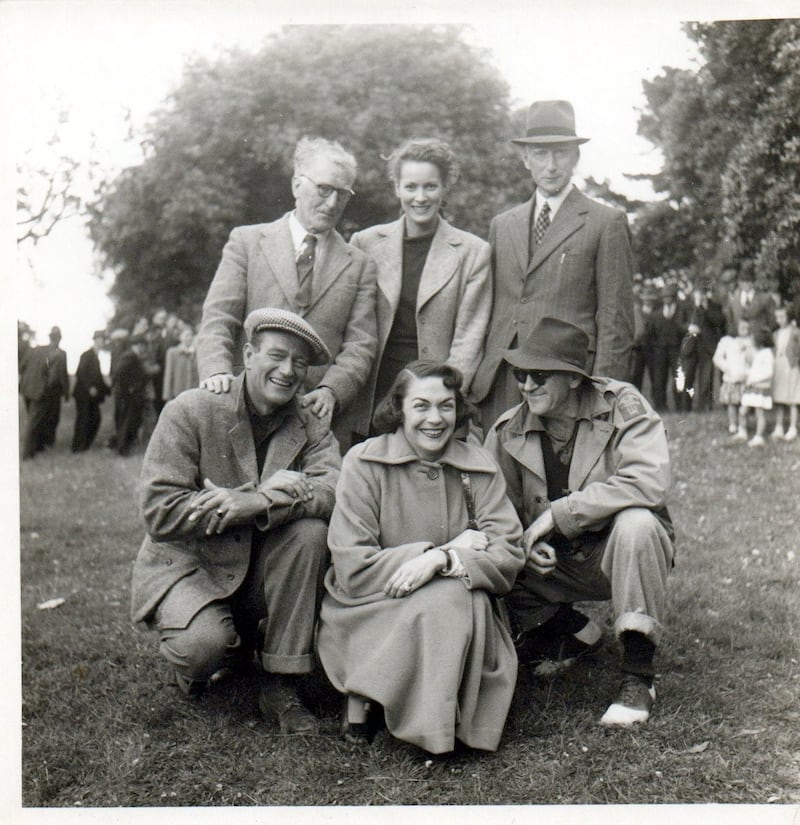
Ernie O’Malley became Commandant-General of the IRA’s second largest division in the War of Independence at the age of 23. He served as second in command of the IRA during the Civil War. When finally released from a Free State prison in July 1924, 20 months after that conflict ended, he was penniless and had few prospects.
O’Malley, now 27, was in terrible physical shape. He had been captured three times during the two conflicts, had escaped twice, was wounded 14 times, tortured by the British forces – but refused to co-operate – and endured a 41-day hunger strike.The former rebel found himself in an emerging State where citizens were relieved to see an end to the violence that had threatened their lives and businesses. They may have remembered O’Malley’s exploits, but many regarded him as a hothead revolutionary.
Some of his former comrades emigrated to the United Sates, some sought to make new lives further afield, and others took whatever they could find in Ireland. But O’Malley possessed a deep self-belief and unwavering perseverance, and so it transpired that in many ways the years after the conflict were as remarkable, frantic and fascinating as those that went before.
Rather than head west, O’Malley travelled to continental Europe, where he spent two years rebuilding his physical and mental well being. He climbed in the Pyrenees, viewed his beloved artists Raphael and Botticelli in Italy, and served as a military adviser to Basque and Catalan separatist groups. He travelled under an assumed name and stayed in small pensions in an attempt to avoid surveillance, but British intelligence monitored his activities closely.
In October 1928, de Valera asked O’Malley and Frank Aiken, his fellow IRA general, to go to America to raise funds for The Irish Press. The men were warmly welcomed by Irish America. The Irish World newspaper reported: “This was one of the most fashionable Irish events ever held in New York City. The Grand March was led by Ernie O’Malley, the Irish Republican leader. When he entered the hall, the bank played The Soldier’s Song, and all joined in the singing.”
When the fundraising tour ended in autumn 1929, O’Malley found himself in California, and there he began writing his memoir On Another Man’s Wound, about the War of Independence. At the same time, he began his deep association with American intellectuals, writers and artists. He befriended John Ford, the film director, whom he would later assist on The Quiet Man in Ireland many years later. The film starred John Wayne and Maureen O’Hara, and O’Hara occasionally looked after Ernie’s young son Cormac on the film set in Cong on the border of counties Galway and Mayo. O’Malley may have initially appealed to the creative set because of his military past, but upon meeting them, he forged deep bonds with a wide variety of artists, including the photographer Edward Weston.

Weston persuaded Ernie to go to Mexico, where he stayed with Hart Crane, the poet, and Katherine Anne Porter, the novelist. Crane wrote: “I have my most pleasant literary moments with an Irish revolutionary, the most quietly sincere and appreciative person I’ve ever met … Ernest O’Malley by name. And we drink a lot together – look at frescos – and agree.”
In late 1929 Ernie was taken to an arts colony in Taos, New Mexico, by Helen Golden, where he joined a group created by Mabel Dodge Luhan, which initially included DH Lawrence, the English novelist, and artist Georgia O’Keefe. There, O’Malley worked on his two memoirs about the Irish conflict, observing the rituals of native American tribes like the Navajo, and creating a friendship with photographer Paul Strand. Strand would prove instrumental in introducing O’Malley to his artistic friends in New York City, the next stop on his tour of America and Mexico.
In New York, O’Malley first went to the Yaddo foundation, whose fellows in residence have included Truman Capote, Leonard Bernstein, James Baldwin and Saul Bellow, and he was invited to finish his two memoirs there. Around this time, he also visited a New York theatre group run by Lee Strasberg, who would later launch the career of Marlon Brando.
Although O’Malley found himself among the most famous creative people in America, he was always broke and could hardly support himself. He wrote of that period, from 1932 to 1935: “Last year being so hard I organized New York so I could be invited out to dinners about four nights a week, but they became mostly society functions … so I decided it was much better to be hungry.”
With the aid of some of his new friends, O’Malley submitted On Another Man’s Wound to nine different publishers. The Great Depression was, at that time, tightening its grip on the country, and each publisher turned the manuscript down. His US fortunes seemed perilous, but then two things happened that would fundamentally change O’Malley’s life.
In Ireland, the new de Valera government provided the former combatant with a disability pension, which was sufficient to allow him to propose marriage to a woman. Then, around the same time, he met his future wife at a Sunday lunch in 1933 in Greenwich, Connecticut. During said lunch, the wealthy industrialist Elon Hooker became quite annoyed by his Irish guest’s criticism of the US government’s treatment of the land’s indigenous people. Hooker’s beautiful, headstrong, artistic daughter Helen was drawn to the way O’Malley stood up to her father. Her sister Blanchette had just married John D Rockefeller Jr, the most eligible bachelor in America, but in 1935 Helen moved to Ireland and married her new husband, Ernie O’Malley, the Irish revolutionary.

From 1935 to 1938, the O’Malleys became part of Dublin’s intellectual set. Helen continued her career as a sculptor, and Ernie developed an interest in painting that would see him become a leading sponsor of Ireland’s foremost artists in the 1940s. He befriended the painter Jack B Yeats, whose later exhibitions in London and Dublin O’Malley would help develop, in addition to writing the introductions to their catalogues.
In 1936, On Another Man’s Wound was finally published by Rich & Cowen in London, and the next year by Houghton Mifflin in Boston under the title Army Without Banners. The New York Times described it as “a beautiful and stirring book”, the Herald Tribune as “a stirring tale of heroic adventure … told without rancour or rhetoric”.
The book's reputation, and that of O'Malley as a writer, would grow ceaselessly, and On Another Man's Wound to this day remains one of the great memoirs of conflict and rebellion.
Ernie O'Malley: A Life by Harry F Martin with Cormac O'Malley is published by Merrion Press















